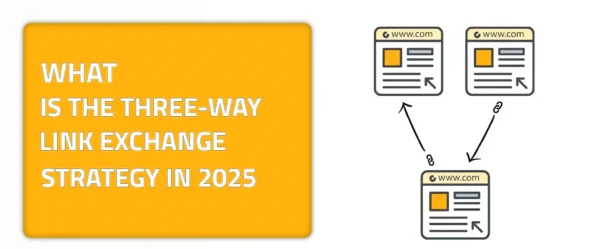What is SERP Volatility? The Full Guide to Knowing How to Combat It!
Search Engine Results Page (SERP) volatility pertains to the variation or uncertainty in the rankings and visibility of search results pages on search engines such as Google, Bing, and others. This is a phenomenon characterized by frequent changes in search results caused by algorithm updates, changes in user behavior, or adjustments in indexing policies. This fluctuation can have a significant effect on website traffic, exposure, and overall business performance, particularly for those who depend heavily on organic search traffic.
Dealing with SERP volatility or fluctuations demands a comprehensive strategy. Being knowledgeable about search engine algorithm updates and industry trends is essential. Observing changes in rankings and search traffic is crucial for recognizing trends and potential reasons for instability. Furthermore, it is crucial to uphold a varied and top-notch content strategy. Producing valuable, captivating, and trustworthy content is crucial for building website credibility and adaptability in the face of SERP fluctuations.
Furthermore, by incorporating top SEO strategies like optimizing metadata, enhancing page load speed, and improving mobile friendliness, you can reduce the effects of SERP volatility. Below, we will uncover everything you need to know in order to inform you enough of what you need to do to understand what is SERP volatility and how to avoid it.
SERP Volatility: Behind The Name and Meaning
“SERP volatility” is a term that represents the dynamic and ever-changing nature of search engine algorithms as well as the preferences of users. The algorithms that search engines like Google use are continually updated and improved in order to enhance the relevance and quality of the results that they provide. This can result in major changes to the rankings and appearance of search engine results pages (SERPs). There are a number of factors that can contribute to swings in search engine results page (SERP) volatility. These include algorithm modifications, changes in user search queries, and the appearance of new competitors.
It is crucial for organizations and marketers who want to maximize their online exposure and organic search ranks to have a solid understanding of the volatility of search engine results pages (SERPs). Businesses are able to adjust their search engine optimization techniques, content production efforts, and marketing tactics by monitoring and analyzing changes in search engine results page (SERP) ranks. This allows them to retain or increase their position in search results.
Tools That Can Help You Track SERP Volatility Efficiently
There are a myriad of tools that can help you track and analyze your SERP volatility in a very efficient way. Let me guide you through some of the tools that can help you track SERP volatility in an easy way that will help you combat it correctly and in all the right ways. You can now optimize your content with confidence using the following SEO optimization and analysis tools:
- Semrush Position Tracking
- Ahrefs Rank Tracker
- Moz Rank Checker
- Keyword.com Rank Tracker
- SE Ranking Keyword Rank Tracker
- Mangools SERPWatcher
How About WordPress? Can It Help?
The answer is a big, fat yes! Several WordPress extensions link to Google Search Console via an API to exhibit user-friendly keyword ranking insights. Nonetheless, numerous extensions have remained stagnant in updates or have limited usage, making endorsement challenging.
Two reputable SEO extensions, utilized by a vast user base, emerge as optimal choices for showcasing keyword ranking details. The subsequent two WordPress extensions proficiently monitor keyword rankings:
- RankMath Pro SEO Extension with Rank Tracker
- SEOPress WordPress SEO Extension
What Can You Do to Overcome SERP Volatility? Examine to Gain Knowledge about Algorithm Updates
Knowing what is SERP volatility is never enough to avoid it. There are certain steps that you take in order to make sure that you eliminate all kinds of SERP volatility. Here is the very first thing that you should do. Search engine optimization is the process of scrutinizing each update and modification to search engine algorithms. Google and other search engines are always tweaking their algorithms to provide better results and a better overall experience for their users. These modifications may have a significant impact on search engine results page (SERP) rankings and visibility.
Website owners, SEO experts, and marketers can gather useful information about what causes fluctuations in search engine results pages (SERPs) by studying algorithm adjustments. By doing so, they can keep up with the latest news regarding penalty changes, ranking factors, and algorithm updates made by search engines. They may keep their websites optimized for better search visibility and ranking stability by keeping up with these updates and adapting their SEO strategy accordingly. Examining algorithm upgrades also aids in determining what may be causing changes in search engine ranks and traffic. In order to reduce the influence of algorithm changes on their website’s performance and stabilize search engine results pages (SERPs), website owners should stay updated on algorithm changes.
Recognize Inadequate Quality Indications
In the context of preventing volatility or fluctuations in search engine results pages (SERPs), identifying mediocre quality signals entails recognizing features within a website or its content that may indicate to search engines that the website is not extremely relevant, authoritative, or trustworthy. These signals frequently consist of material that is either out of date or lacking in depth, backlinks of poor quality that originate from sources that are irrelevant or spammy, slow page load times, poor mobile optimization, and high bounce rates.
Website owners and marketers have the ability to improve the overall quality and trustworthiness of their online presence by detecting and resolving the indications that indicate subpar quality. In turn, this helps limit the danger of unexpected decreases in search engine rankings as well as variations in the visibility of search engine results pages (SERPs). Engaging in regular content audits, link profile assessments, technical optimizations, and user experience enhancements are vital tactics that can be utilized to discover and remedy indications of substandard quality, hence nurturing a position in search engine results pages that is more solid and robust.
Keep Your Webpage Up-To-Date
Maintaining a webpage’s current status is essential for reducing the impact of SERP fluctuations. Search engines value up-to-date and pertinent content as a key indicator of a website’s trustworthiness, expertise, and alignment with users’ search queries. Consistently refreshing webpage content, including blog posts, articles, product descriptions, and other information, demonstrates to search engines that the website is dynamic, trustworthy, and beneficial to visitors.
This may result in increased crawls and indexing by search engine bots, ultimately leading to improved search rankings and SERP stability. Furthermore, keeping content current is crucial for keeping users engaged, enticing them to come back, and enhancing their overall experience, all of which play a role in reducing bounce rates and increasing user satisfaction levels—elements that search engines take into account when ranking SERP results. Therefore, maintaining webpages with current, pertinent, and top-notch content can prevent changes in SERP rankings and keep a competitive advantage in the constantly changing online search environment.
Give Attention To Your Users’ Satisfaction Rates
By giving useful insights into the relevancy and quality of a website’s content and user experience, tracking and monitoring user satisfaction ratings can help reduce volatility in SERP (Search Engine Results Page) ranks. Webmasters and marketers may learn a lot about their content’s success in connecting with users and satisfying their search intent by examining metrics like engagement levels, dwell time, bounce rates, and contact rates.
Positive engagement rates show that users are satisfied, which tells search engines that the content is useful and relevant to their queries. This means it will rank higher and be more visible on search engine results pages. In addition, website owners can boost their content and user experience to meet user expectations by constantly tracking user satisfaction rates. This way, they can find places to improve, address customer issues, and optimize the site overall. Taking this preventative measure helps build a more solid and user-friendly online presence, which in turn lessens the chances of seeing significant changes in search engine results page ranks.
Implement Yearly or Quarterly SaaS Tools Audits
In order to keep websites healthy and relevant and to avoid fluctuations in search engine results pages (SERPs), it is recommended to implement site audits on an annual or quarterly basis using Software as a Service (SaaS) technologies. In order to find problems that can affect search engine rankings, these audits examine technical SEO factors, content quality, and backlink profiles in depth.
Site owners may improve their authority, user experience, and search engine performance by fixing common problems or issues. Ones that include broken links, duplicate content, and poisonous backlinks. There will be less room for unexpected shifts in search engine results page (SERP) ranks if you have your website audited on a regular basis.
Wrapping It Up!
Understanding what SERP volatility is of the essence in order to avoid falling into its pitfalls and making mistakes that could delay your visibility and exposure. Another tool that can help you is our platform, linkexchange.ai. This is a platform that will help you increase your SEO visibility and enhance your exposure in ways you’ve never experienced or seen before.
We assist website owners in developing a broad and natural backlink profile by building partnerships with high-quality websites. Something that can contribute to higher search engine rankings and reduce vulnerability to the volatility of search engine results pages (SERPs).










